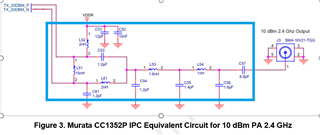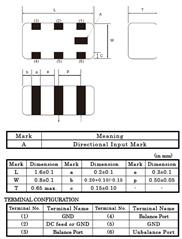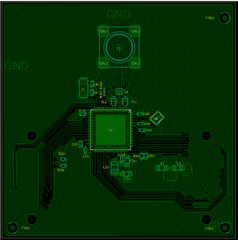- Ask a related questionWhat is a related question?A related question is a question created from another question. When the related question is created, it will be automatically linked to the original question.
This thread has been locked.
If you have a related question, please click the "Ask a related question" button in the top right corner. The newly created question will be automatically linked to this question.
I'd like to verify with Texas Instruments that the CC1352P will need two baluns and a switch for the Bluetooth when using the 20dBm PA.
I plan on using the 20dBm PA for the Bluetooth (Sub GHz will not be used). For this case, will I need to use two baluns and a switch to operate the Bluetooth?
Balun for receive would connect to pins 1 & 2
Pin 1 RF_P_2_4GHZ
Pin 2 RF_N_2_4GHZ
Balun for the transmit would connect to pins 5 & 6
Pin 5 TX_20DBM_P
Pin 6 TX_20DBM_N
The switch would connect the antenna to each of the baluns.
I'm planing on using the +10dBm circuit as described in the link to swra636c.pdf (and add a switch similar or the same as the SKY13317-373)
The attached image is a kludge from two schematics - Figure A-1 in the +10dBm 2.4 GHz schematic (swra636c.pdf) document and the schematic document LAUNCHXL-CC1352P1_SCHEMATIC.pdf from the swrc349a Launchpad.

Is there any additional information that I could provide to help answer the question?
For 10 dBm PA IPC 2.4 GHz, there is now a part available from Murata.
Part number: LFB182G45BGEF296



An application note on this will be released soon.
Regards,
Richard
RGW - Thanks for the information on that surface mount balun. I'm sure this information will be useful at some point - but, my question was if I needed to use two baluns for Bluetooth if I were to use the 20dBm PA.
I re-posted this same question in the Bluetooth forum due to potential confusion over the question being asked.
Yes, you will need two baluns if you use the PA section and the standard RF port (Rx & Tx) configured as differential mode.
If you want to reduce the component count, the standard RF port can be configured as single-ended Rx only.
The PA section will always need it's own balun.